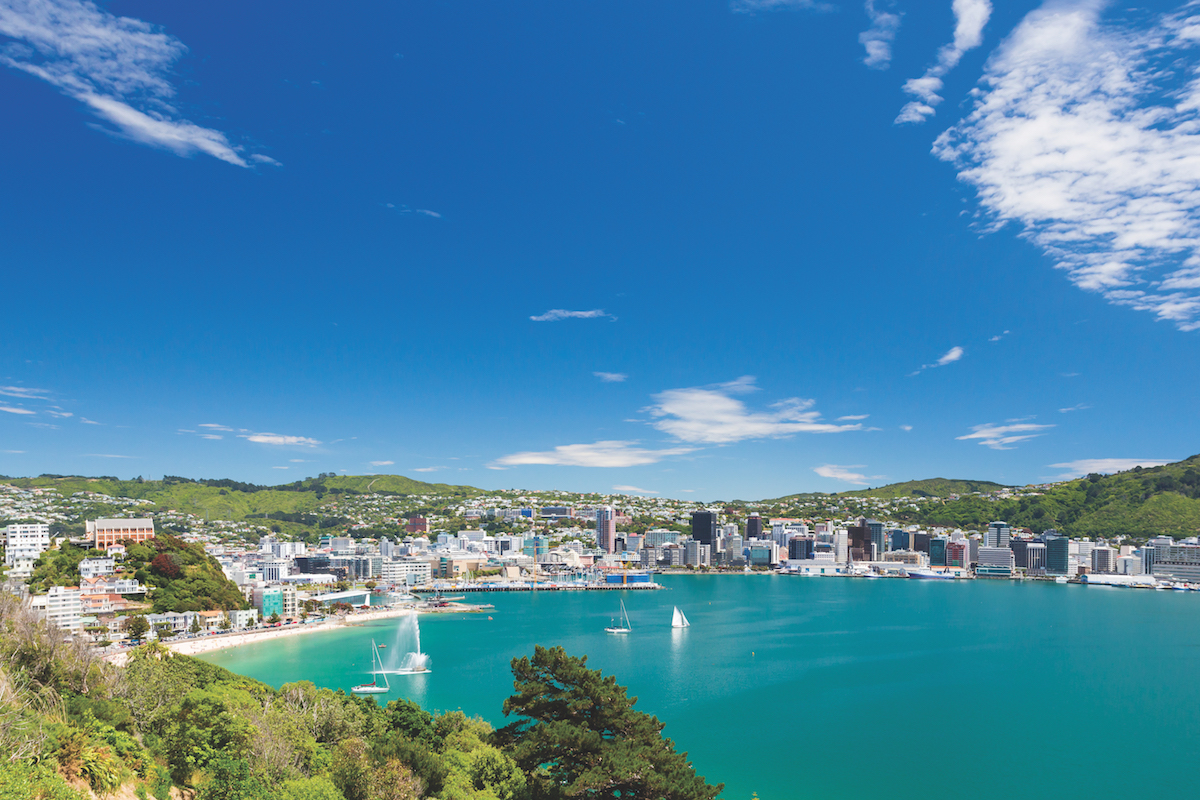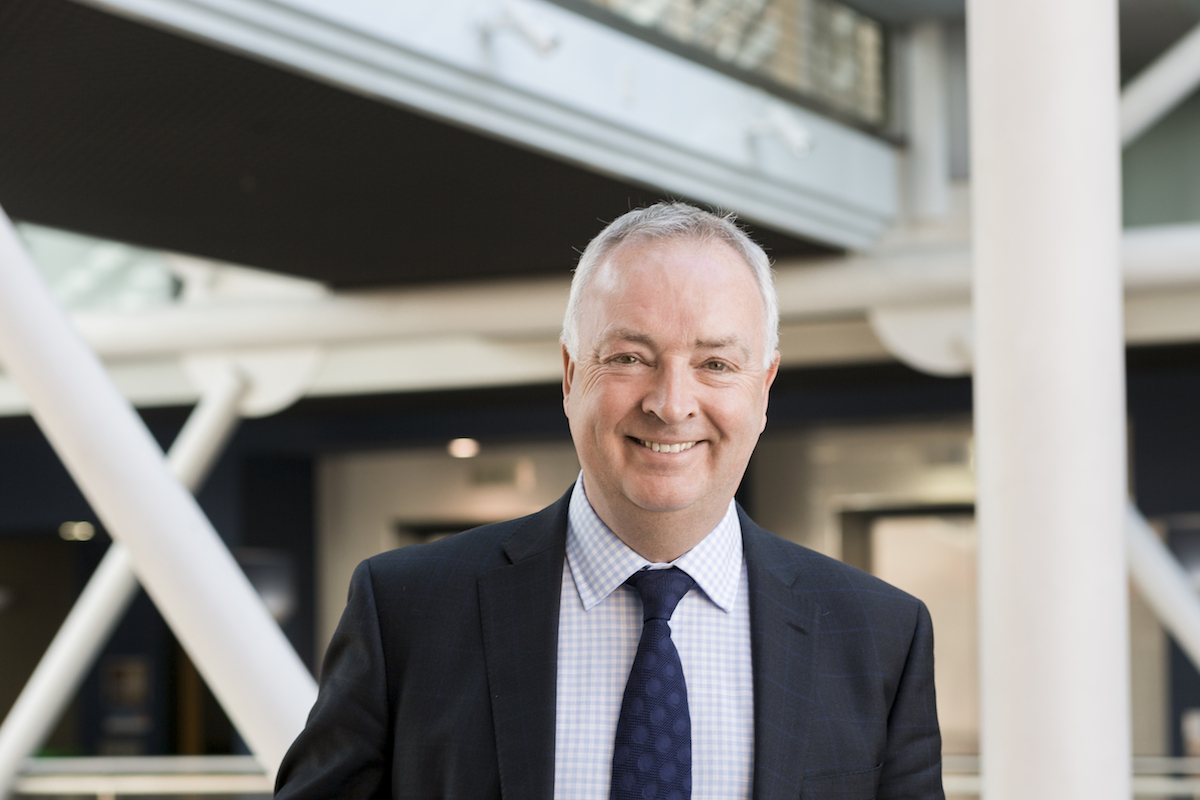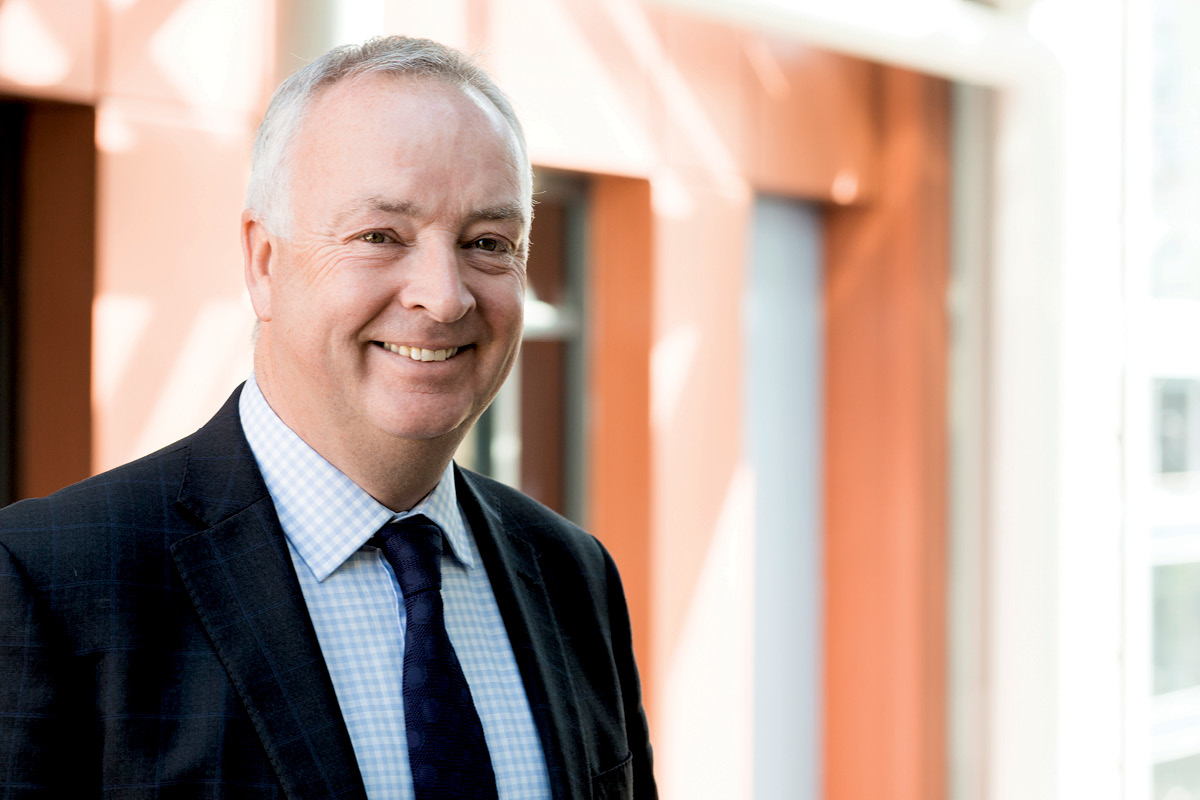Kevin Lavery, CEO of Wellington City Council, still remembers how a headhunter sold him on a move to the youthful New Zealand capital: “She said it is a beautiful city in a far-off place with a sunny harbour, blue skies and a nice, gentle breeze.”
The harbour was sunny and the skies as clear as promised, but Kevin soon realised that the city was more often being swept by rugged southerly winds than caressed by a soothing breeze. Still, he loved it.
“I don’t know about my colleagues, but I really enjoy the fierce weather. It changes so rapidly, it’s quite special.” Kevin’s road to the city sometimes known as ‘Windy Wellington’ has been a winding one. “It’s probably an unusual path”, Kevin acknowledges, covering as it does executive roles in both the private and public spheres, consultancy work, and roles across the UK, US, Scandinavia and now New Zealand.
Kevin Lavery’s leadership philosophy
His experience in local government dates back to his first chief executive role, when he was council CEO of his home town of Newcastle upon Tyne in the UK. He has also overseen major transformational projects, having been chief executive of Cornwall Council when it merged with six other councils in 2009.
Kevin managed the transition and the first four and a half years of the unified council. Both these roles saw him refine his philosophy on management.
“As a leader, you’ve got to be clear on where you’re going,” he says. “You need to know what your vision is and how you will make that vision happen. Then you need to recruit good people and empower them to get on with it. I don’t want to micromanage people. I want to give them a lot of autonomy and help them to succeed by being clear on where we want to get to.”

He says that gaining broad experience in the private sector can often be hugely beneficial in progressing through management levels of public service. “I know this because I’ve done that in the past. In local government, you see things happening that really matter to people.”
Asked what advice he would pass on to someone looking to progress to executive levels of government, he relates a story of his time in Newcastle upon Tyne when he was reminded of the possibilities that the sector offers. He took his children to Seven Stories, The National Centre for Children’s Books, which is housed in a restored Georgian mill in the city’s Ouseburn Valley district.
“My children loved it so much. Someone else came up with the idea for the project, but as chief executive I played a small role in making it happen. I made sure we made our financial contributions to that project and that it was properly resourced. The exhibition was quite spectacular and it got me thinking about how we can only do projects like that in local government. So that would be my advice: remember what it’s about, and enjoy it.”
Wellington City Council partners with TechnologyOne
Another strand of Kevin’s experience which made him a good fit for the Wellington role was his extensive background in the IT space, including a number of tech-based leadership roles. He had been chief executive at Agilisys, a start-up working in the burgeoning e-government space. Later, he was in charge of the global technology business at transport and logistics solutions provider Serco.
This is particularly relevant given that a key component of Wellington’s long-term planning is staying at the cutting edge of technology. This is where the city’s partnership with TechnologyOne comes in.
“It’s quite a major transformation program in the council,” he says. “We want to be the Air New Zealand of local government. It struck me that we would have a developer wanting to do some swanky development in the city, so they would get the architects to draw up digital plans. Then they had to print them all out to hard copy, put them in a brown envelope, and physically bring them to the Town Hall. That didn’t feel right. We had to capture that digitally.”
Instead of such outdated processes, Kevin says, the council is aiming to reorganise the way it works and offers services, seeking to be more customer-focused. This means a complete digital realignment, replacing a patchwork of 200 separate systems with a single connecting structure.

Some of the old systems had been designed by small companies, or even individuals, that had gone out of business or couldn’t offer support, a pitfall avoided by the new streamlined system.
“What TechOne has done is provided a modern platform to do everything on. In addition, we have four councils in the Wellington area that have a contract to share ICT infrastructure.” The two new platforms will also facilitate the council using more online and cloud-based technology.
Kevin likens the infrastructure provided by Dimension Data and the software by TechOne to building a home. “Once the foundations are strong, you can have a really good house built on that. Then we can look at the other stuff around that, say a new kitchen and bathroom. But you’ve got to have the basic structure in place to make it work. That’s what TechOne and Dimension Data are providing.”
He has seen the pitfalls of badly implemented IT projects and knows how to avoid them. “I’ve been on the other side of the fence, providing IT services to government clients and private-sector companies,” Kevin explains.
“I’ve done this many times before. I know that big IT change projects are not easy to do and can easily go pear-shaped. It’s important that you don’t over-promise. You need to manage expectations, take things one step at a time, and have it properly resourced. Ultimately, you have to remember it’s not actually all about the technology.
I’ve done this many times before. I know that big IT change projects … can easily go pear-shaped.
“The problems usually happen when you get people using it in different ways or moving the goal posts, or not being clear about it. A lot of problems with technology projects are really around the people side. However, I think we’ve got that direction broadly right with the technology we’re implementing here.”
A smart growth plan for Wellington
Kevin describes Wellington as a “small, fast-growing, wealthy city with a bright future.” He says it often reminds him of a European capital, with its vibrant cultural life and compact layout. “We’ve also got the highest public transport usage in Australasia and the highest number of people who walk or cycle to work. It’s a genuine eco city.
“The transformation project we are doing is about smart growth of the city: maintaining a high quality of life by having a unified growth plan for jobs, transport and housing.” The last represents another key pillar of the city’s major rejuvenation projects, a NZ$400-million program which represents the largest investment in social housing in the country’s history.
“It’s a growing city and it needs more social and what I would call intermediate housing. We already have some refurbished apartments at the city council and we’re expanding that operation going forward.”
Wellington is delivering its creative capital strategy, which aims to recognise that the creative industries that flourish in the city are not just part of the regional fabric but are important drivers of the economy and job creation.
“We have a lot of great cultural events in the city,” Kevin enthuses. “We’ve got the ballet, the orchestra, vibrant music and literature scenes. Our ‘decade of culture’ is about both enjoying the best Wellington has to offer and also providing a place for the best culture in the world to come here. We’d like to grow our creative industries sector in a way that cities like Barcelona and Austin, Texas, have done internationally.”
A strong cultural offering
Kevin says cities are increasingly competing with each other for skilled migrants, business investment and tourism. Putting initiatives in place to ensure the cultural scene continues to thrive and create jobs is a way of differentiating Wellington.
The centerpiece of the investment in the creative industries is a major new movie museum the council is building in conjunction with The Lord of the Rings director Sir Peter Jackson, and Sir Richard Taylor, founder of special effects company Weta Digital and Weta Workshop.
“We’ve bought the site and finalised the design,” Kevin reports on the planned museum. “We’ve agreed to terms with the two knights and it’s now about building it. Alongside our friends in the movie industry, we’ve put together a good council project team, along with fantastic architects, a great developer and builder.”
Visit Wellington
With its natural beauty and thriving arts scene, here are just a few of the many reasons to take a trip to the windy city.
- 20 January: Wellington Pasifika Festival
- 27 January: Wellington Wine & Food Festival
- Te Papa: New Zealand’s national museum
- Zealandia: An urban wildlife sanctuary
- Weta Cave Workshop tours: A must for fans of The Lord of the Rings films
Located opposite Te Papa, the national museum and art gallery, the museum site will include a state-of-the-art convention centre, cementing the city’s status as an events capital.
Further projects in development include a 10,000-seat indoor arena which will allow Wellington to host more international touring bands and musicals. The airport runway extension project will also bolster the city’s capacity to host other major events.
Another aspect of strengthening the city’s creative hub is revitalising the Town Hall, which has housed council headquarters and is also a music venue of some note, having hosted The Beatles and The Rolling Stones. The completed Town Hall will be home to a National Centre for Musical Excellence and the New Zealand Symphony Orchestra, and the Victoria University School of Music will use the auditorium as its performing space.
Increasing earthquake resilience
Wellington’s geography makes for stunning scenery, but it also means there are planning and logistics challenges that can’t be ignored. “We live in the middle of an earthquake zone,” Kevin explains. “We’ve got a number of faults in Wellington. It’s a city that’s used to seismic change.”
Some of the city’s iconic buildings are directly affected by this threat, with the Town Hall having been deemed earthquake-prone. Extensive work to prepare it for a quake will be done as part of its revitalisation before it reopens to the public in 2021.
The council is strengthening its plans and protocols to respond to earthquake activity more generally and keeping it front of mind for future developments. So far, the city has shown an ability to respond quickly in an emergency.
“We had a very big earthquake in November 2016, the Kaikoura earthquake, 7.8 on the Richter scale. Wellington coped with that remarkably well. The city was up and running 24 hours after it happened. All our council facilities were back within two days. It was a major warning shock, but I think we saw our leadership work well in the most challenging of circumstances.”
Increasing earthquake resilience is a major ongoing task, Kevin says. Wellington is part of the Rockefeller Foundation’s 100 Resilient Cities initiative, which aims to help equip the listed cities (which cover some 20% of the world’s urban population) for a range of physical, economic and social crises.
“It’s quite a big job still to be done. We’ve been working hard to improve resilience and to reduce the risk to our city’s residents and visitors. But I think the council showed its leadership in a good light and coped with a difficult challenge very well.
“There are a lot of lessons to learn from that because an event like an earthquake will test organisational boundaries. “We did well with the emergency when it happened. There wasn’t any loss of life in Wellington, but there could have been had it occurred during the day. It’s been a great project and there is a lot of ongoing work happening in that space, in terms of electricity, water, fire-fighting. Building standards are another key area and the council is at the heart of all that.”
“Wellington is a special place: edgy, arty, smart and young”
With major ongoing projects like implementing the TechnologyOne digital transformation, facilitating further investment in the creative industries, and preparing the city for earthquakes, it would be easy for Kevin to become captive to his work. Yet he says work–life balance is of great importance.
“I’ve learned the hard way that you need to genuinely have a sensible lifestyle, otherwise you cannot last for the long term. I’m in my 50s and I’m still playing in a Masters soccer team. Wellington is extremely picturesque and I enjoy running and mountain biking. I’ve got my wife and two teenage boys here, and we enjoy going out and getting around the city.”
Kevin says the natural beauty of his adopted home, and its unique layout, makes it easier to get away from the desk. “We are really close to nature here. I mean, you could call this the ‘10-minute city’ because you can get anywhere in 10 minutes. You can literally be on your paddleboard on the harbour, and 10 minutes later you’re up in the mountain bike trails. It’s that sort of place.”
This connection to the area’s identity is central to his role. As he pushes forward with a suite of ambitious projects, Kevin says his inspiration will continue to be the city itself. “What we want to do is to ensure that we are a city of the future. Wellington is a special place: edgy, arty, smart and young. We want the council to be like that as well, to be more like Wellington.”



